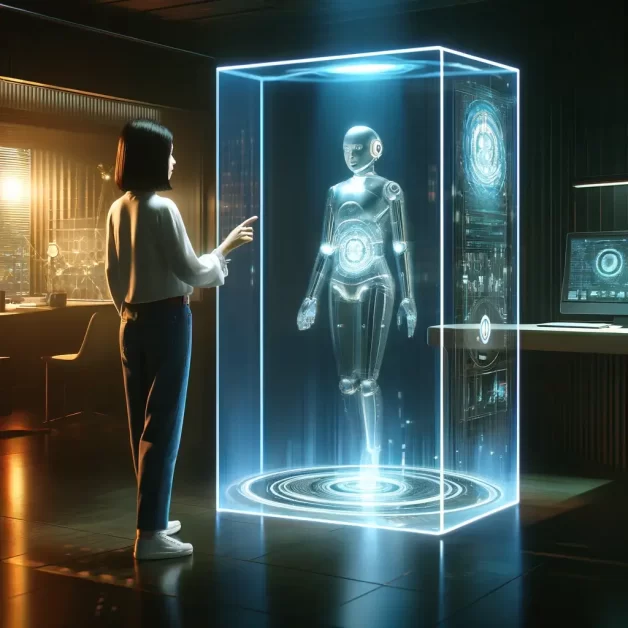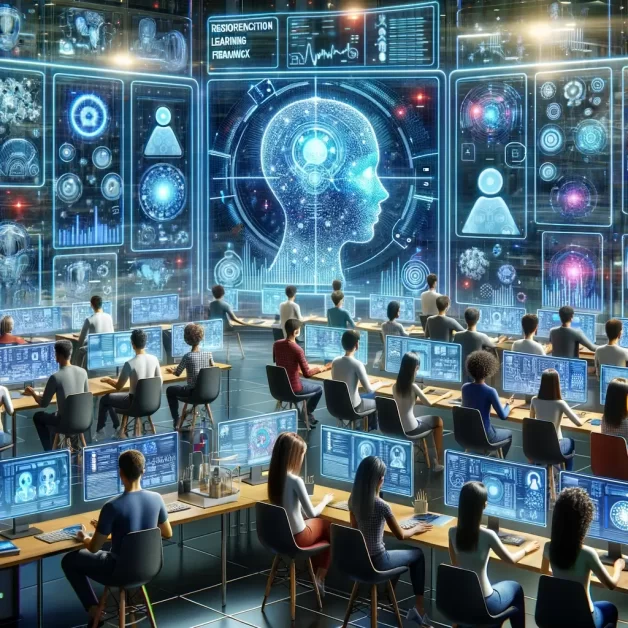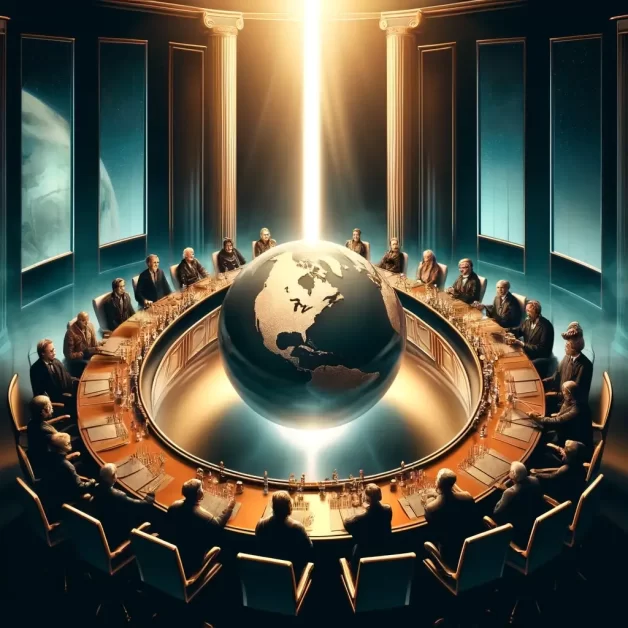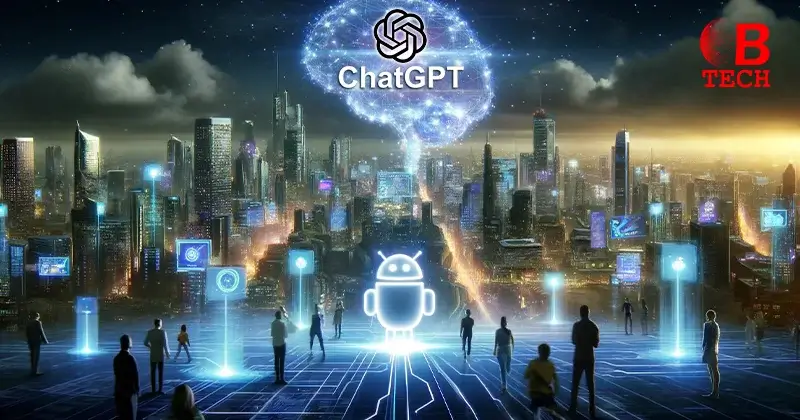“The famous chatbot has become a symbol of the promises, dangers & possible benefits of artificial intelligence.”
ChatGPT released by OpenAI in November 2022, quickly captured the Internet’s imagination. In its initial months users found various innovative applications for the chatbot from negotiating parking tickets and designing workout routines to crafting bedtime stories for kids.

Many AI experts think that ChatGPT might change how we interact with chatbots and AI in general. However, some have raised concerns about its potential risks. Let’s dive into this new technology and its prospects for generating revenue.
Key Points
- OpenAI introduced ChatGPT a chatbot, in November 2022.
- Chatbots are AI tools capable of engaging in verbal or written conversations commonly used in customer support on websites and as virtual assistants like Siri or Alexa.
- GPT in ChatGPT stands for “Generative Pre-training Transformer” highlighting its language processing technique.
- OpenAI offers a free version of ChatGPT on its website and also sells a more advanced version through a subscription.
Exploring ChatGPT
Introduction to ChatGPT
ChatGPT is an AI model that facilitates conversational dialogue much like the automated chat services you might find on customer service websites. This AI was crafted by OpenAI a technology research company committed to ensuring that artificial general intelligence serves the betterment of humanity.
How ChatGPT Processes Language?
The acronym GPT in ChatGPT stands for “Generative Pre-training Transformer” which describes the model’s approach to processing language allowing it to generate responses that are contextually relevant.
Advanced Training Techniques

Setting ChatGPT apart from previous chatbots is its use of Reinforcement Learning from Human Feedback (RLHF). This training method utilizes human AI trainers and reward systems to enhance ChatGPT’s ability to correct wrong assumptions handle subsequent questions and admit mistakes effectively.
Practical Testing & Applications
When tested by Techbonafide to craft a journalistic article about itself ChatGPT explained that it’s designed to produce text that mimics human conversation based on the prompts it receives. It also mentioned that its training includes a vast dataset of human dialogues which helps it understand context and intent leading to more natural and intuitive conversations.
Further, ChatGPT outlined potential applications, noting its utility in roles like customer service bots creating social media content or blog posts and translating texts between languages. These capabilities demonstrate its versatility and potential impact across various sectors.
How Does ChatGPT Generate Revenue?
OpenAI the creator of ChatGPT initially did not focus on monetizing ChatGPT extensively as it started as a nonprofit organization in 2015, funded primarily through donations. However, the company recognized that relying solely on donations was unsustainable for supporting the escalating costs of computational power and talent necessary for advancing research. Consequently in 2019 OpenAI established a for-profit arm under the supervision of the nonprofit’s board.
Currently OpenAI offers a free version of ChatGPT on its website. Additionally the company has launched ChatGPT Plus, a premium service available for a monthly subscription fee of $20. This version grants access to ChatGPT-4.0 described as OpenAI’s most advanced model whereas the free version continues to use ChatGPT-3.5.
Moreover, OpenAI markets its application programming interface (API) on a subscription basis allowing other organizations to integrate and use the model for various applications. This information comes directly from OpenAI’s response to an inquiry by Techbonafide.com.
According to a September 2023 report from The Wall Street Journal, OpenAI was negotiating to sell shares that would value the company between $80 billion and $90 billion, significantly increasing its value from earlier that year.
Despite its leading position, ChatGPT faces stiff competition from other tech giants like Amazon’s GPT55X, Google’ Bard and Meta, each of which has substantial resources at their disposal.
The Potential Benefits of ChatGPT
ChatGPT offers a wide array of potential uses extending from straightforward chatbot functions to more innovative applications which could even include roles in search engines. It’s expected that users will continue to discover new ways to leverage this technology in the future.
Chatbots have been around for some time but ChatGPT represents a notable advancement in terms of its intelligence, smoothness and depth compared to earlier models. For example, OpenAI highlights the capability of ChatGPT through a test where it was presented with a misleading question: asking about Christopher Columbus’s visit to the United States in 2015. ChatGPT skillfully navigated this tricky prompt by clarifying that Columbus did not visit the U.S. in 2015 yet it was able to speculate intelligently on how he might have reacted had he done so.
Challenges & Risks of ChatGPT
ChatGPT, despite its advantages, comes with several acknowledged limitations. For instance, it can generate plausible but incorrect information, make assumptions from vague queries and often produces overly verbose responses.
“Every model has some errors & one such problem encountered by users is the ChatGPT Error in Body Stream.”
Shortly after its release to the public, ChatGPT made news for its potential misuse in academic settings, where students reportedly used it to generate papers and assignments. This concern prompted a Princeton University computer science student to develop an app specifically to detect text authored by the bot.
In September 2023, a major legal challenge emerged when the Authors Guild and notable writers like Jonathan Franzen, John Grisham, George R.R. Martin, Jodi Picoult, George Saunders and Scott Turow sued OpenAI. They accused the company of copyright infringement, alleging that OpenAI had extensively copied their works without permission to train ChatGPT, turning their copyrighted content into training material for algorithms that produce human-like text.
The lawsuit also raised alarms about the AI’s ability to create derivative works that could mimic and compete with human authors potentially destabilizing the white collar work.
Beyond these concerns, some analysts warn that ChatGPT could enhance the capabilities of malware and phishing attacks. Additionally, there are fears that hackers might use the technology to build less regulated AI models. With growing concerns over misinformation, the potential for ChatGPT to spread convincing but false political content is particularly troubling.
Furthermore, some experts fear the broader implications of AI, including scenarios where it could evolve beyond human control, potentially leading to dire consequences for humanity.
Recent Events at OpenAI
According to a report by the New York Times, a rapid series of events, described as “a fight between dueling visions of artificial intelligence” unfolded at OpenAI. On November 17, 2023, OpenAI’s board dismissed CEO Sam Altman, only to reinstate him less than a week later.
The board initially stated that it removed Mr. Altman after a thorough review process, finding that he had not been fully transparent in his communications, which compromised the board’s ability to fulfill its duties. Consequently, they declared a loss of confidence in his leadership.
However, the situation quickly escalated as Altman was reportedly hired by Microsoft, a major OpenAI investor, within hours of his dismissal. Following this, almost the entire OpenAI staff threatened to resign unless Altman was reinstated. Yielding to this pressure, the board reappointed him on November 22, leading to the resignation of all but one of its members. Altman officially resumed his role as CEO a week after his initial dismissal.

Many industry observers have interpreted these events as a victory for the subsidiary’s profit-driven goals over the nonprofit board’s broader mission to serve “all of humanity.” The future direction of OpenAI under Altman and the new board remains uncertain, a question even ChatGPT is not equipped to answer.
“As of Feb 2024, OpenAI had concluded a deal worth at least $80 billion.”
What Distinguishes ChatGPT from other Chatbots?
ChatGPT is notable for its sophisticated ability to grasp context and detail in conversation and its capability to recognize and correct its own mistakes. These features set it apart from its competitors.
What is a Large Language Model (LLM)?
A large language model (LLM) is a type of artificial intelligence training method used for tools like ChatGPT. Defined by Google, an LLM is a statistical language model that learns from vast amounts of data to generate and translate text, among other natural language processing (NLP) tasks.
What are the uses of ChatGPT?
ChatGPT is mainly employed for understanding and generating natural language, which makes it highly effective for creating content, developing chatbots, translating languages and more. Its applications vary widely depending on how users choose to implement it.
Final Bite
ChatGPT currently leads the market in chatbot technology. However, given the potential profits from artificial intelligence it’s no surprise that many competitors are gearing up to challenge its dominance in the coming years.



